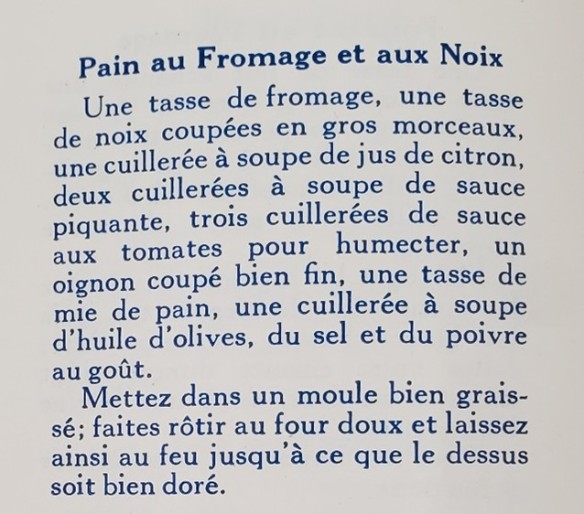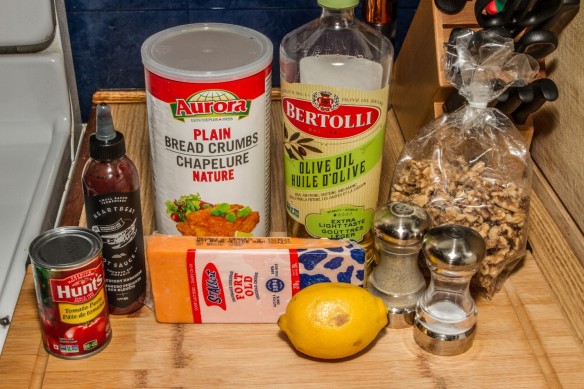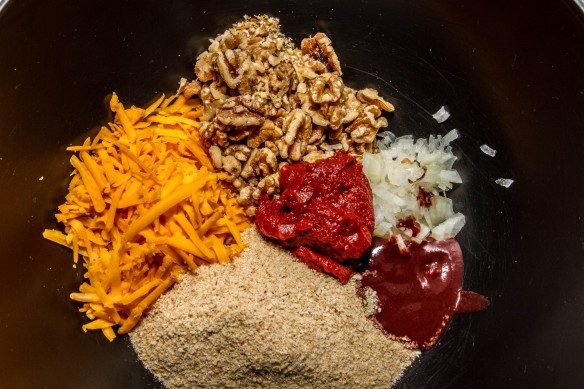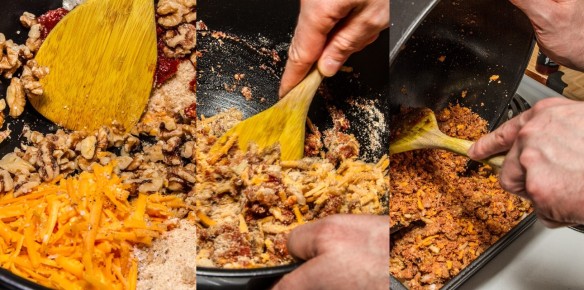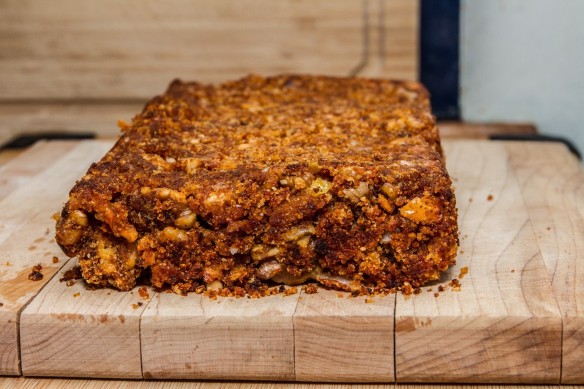You probably don’t know me, but you might recognize my hands from previous blog posts in this series by Ariane Gauthier. If you haven’t read the articles yet, I highly recommend doing so. In these baking adventures, I served as the muscle and hand model, guided by Ariane, a far more passionate and skilled baker than I. However, for the sweet potato pie recipe featured in this article, I embarked (mostly) solo into the complex and fascinating realm of baking.
As a novice baker attempting my first-ever baking project, I was initially apprehensive about following a recipe that provided very little guidance. Despite my doubts, my pie turned out quite tasty! I invite you to follow my journey below and try making the recipe for yourself.
Before delving into the culinary endeavours ahead, let’s explore the chosen recipe’s source.
Published in 1909, Culinary Landmarks or Half-Hours with Sault Ste. Marie Housewives was a labour of love by members of the St. Luke’s Woman’s Auxiliary from the Sault Ste. Marie area, in Ontario. It’s the third edition of what was originally known as the Handy Cook Book. The first version was so well received that a second and lengthier third edition were published. The third edition includes the recipe I followed.
The first question an inexperienced baker like myself might ask is: where does one start? The answer lies in following the recipe from Culinary Landmarks or Half-Hours with Sault Ste. Marie Housewives, which can easily be found in Aurora, Library and Archives Canada’s (LAC) library catalogue.

A recipe for sweet potato pie from Culinary Landmarks or Half-Hours with Sault Ste. Marie Housewives (OCLC 53630417).
The ingredients for this recipe are rather simple. You need one pound of sweet potato, three-quarters of a pound of butter, three-quarters of a pound of sugar, six eggs, nutmeg, a bit of whisky, and some lemon zest (along with the components for the pie pastry, which we’ll discuss further below).
Upon reviewing this recipe, you’ll notice that there are no instructions on how to prepare the pie crust. As a rookie baker, this posed a significant challenge for me. Fortunately, I found salvation in a previous article in this series, which explains how to make pie dough.
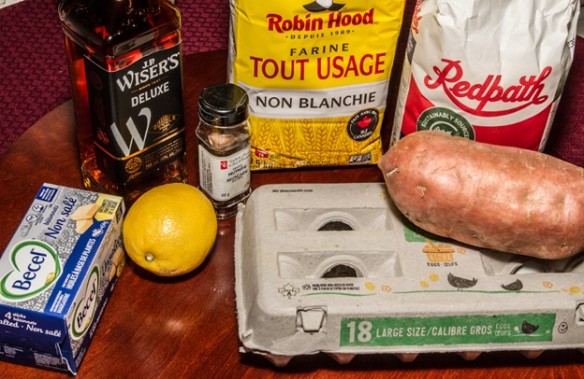
Ingredients used by the author to make the sweet potato pie recipe from Culinary Landmarks or Half-Hours with Sault Ste. Marie Housewives. Image courtesy of Ariane Gauthier.
Once you’ve gathered all your ingredients, you can start the pie-making extravaganza! The first step involves boiling the sweet potatoes. While the original recipe advises boiling the potatoes with the skin on, I opted to peel them for my own reasons.
After boiling them, I started the arduous task of pressing the still-hot potatoes through a colander. Be prepared for a bit of exertion during this step, but rest assured—it’s a great opportunity for a workout!
Next, I beat six eggs in a bowl and set them aside. Then, I creamed together the butter and sugar. After that, I mixed in the sweet potatoes, continuing to blend. Finally, I added the eggs until the mixture was homogeneous.
While mixing everything together, I must admit it didn’t look appetizing. However, I reminded myself to trust the process and have patience. This baking experience taught me the importance of believing in the recipe and persevering despite initial appearances. So, despite the unappealing look, I remained optimistic and continued on.
Once everything was mixed, I began incorporating the recipe’s flavours: nutmeg, whisky and lemon zest. This step is vital for enhancing the pie’s flavour profile. Initially, I added an ounce of whisky and a small amount of lemon zest and nutmeg. However, upon tasting, I found it lacking. Therefore, I continued to mix while gradually adding more lemon zest and nutmeg. After a few minutes, I achieved the perfect balance. Voilà! The mixture was ready to fill the pie pastry. As for the pastry itself, I baked it for about five minutes before adding the mixture, which may or may not have been a brilliant idea (I’ll leave that for you to discover by trying it yourself!).

Mixing in an ounce of whisky and adding the mixture to the pie crust. Image courtesy of Ariane Gauthier.
Baking the pie for about 30 minutes at 400°F (about 205°C) seemed to do the trick. I was a little worried about the filling puffing up, but I left the pie in the oven, even though it looked like a balloon ready to pop! I utilized some of the leftover dough to create designs on the pie and even had enough mixture left to make pudding. My cooking partner Ariane also made a pie. You can check out our final creations below.
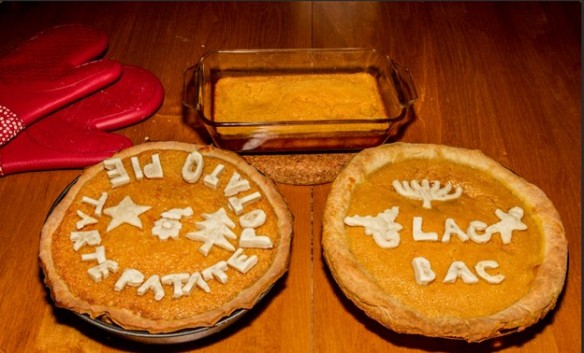
Sweet potato pies and pudding. The author’s pie is on the right, while Ariane’s pie is on the left.
Image courtesy of Ariane Gauthier.
Despite it being my first attempt at baking, I’m pleased to report that my pie turned out to be delicious, a sentiment echoed by my colleagues who sampled it. While the first pie provided valuable lessons on what to do and what to avoid, leading to improvements in the second attempt, the process was not without its trials and errors. Nevertheless, I wholeheartedly encourage you to try your hand at baking this pie and to share your thoughts as you savour a slice of history! With that said, I’d like to conclude this blog with an excerpt from the book that inspired this recipe:
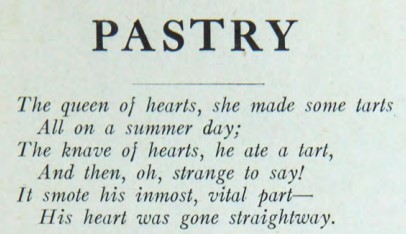
Detail from Culinary Landmarks or Half-Hours with Sault Ste. Marie Housewives (OCLC 53630417).
If you try this recipe, please share pictures of your results with us using the hashtag #CookingWithLAC and tagging our social media: Facebook, Instagram, X (Twitter), YouTube, Flickr and LinkedIn.
Dylan Roy is a Reference Archivist in the Access and Services Branch at Library and Archives Canada.


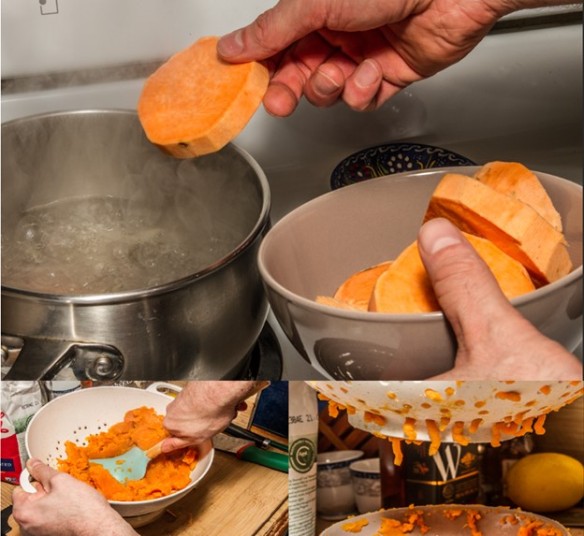
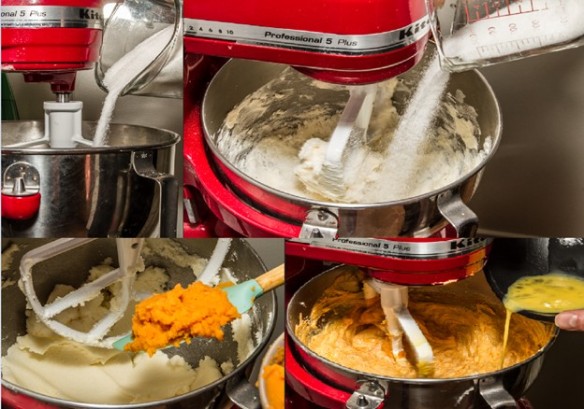
![Cover page of a booklet with the inscription "Mangeons du fromage : Recettes et menus" [Translation: Cheese Recipes for Every Day].](https://thediscoverblog.files.wordpress.com/2024/03/image-1.jpg?w=584&h=863)
